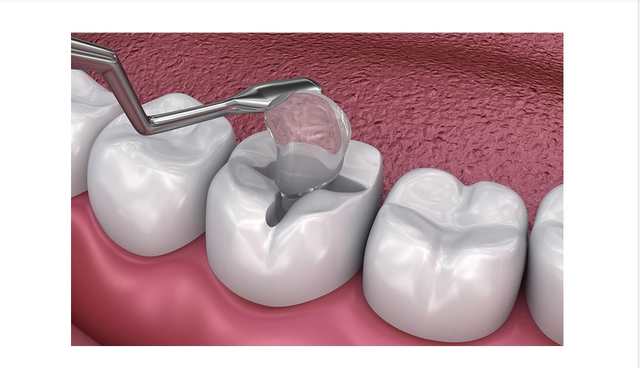What are Dental Fillings?
Dental fillings are single or combinations of materials such as glass, plastic, metal, or other substances used to fix or restore teeth. Fillings are also used to repair fractured or broken teeth as well as teeth that have been worn down through misuse. One of the most common uses of fillings is to “fill” a section of the tooth that your dentist has removed due to decay – “a cavity” (such as from nail-biting or tooth-grinding).
Types of Dental Fillings
- Silver amalgam fillings
This filling is well-liked. Tin, zinc, copper, mercury, and other minerals are combined with silver in silver amalgam fillings in addition to silver. It is a popular option because it is reliable, affordable, and durable compared to other options. A typical silver amalgam filling is capable of lasting 12 years. Due to its malleability, dentists find it simple to use.
Its biggest flaw is that it lacks aesthetic appeal, making it a poor choice for a visible tooth. The material may contract and expand in response to temperature variations, cracking the tooth. The changes may leave a space between the filling and the tooth, allowing food and germs to enter and forming new cavities. Despite the controversy surrounding mercury in silver amalgam, it has been approved for use as a filling material.
- Composite Fillings
Plastic and resin are used to make composite fillings. It is put inside the tooth while still soft and hardened under a strong curing light. It is a common choice since it can made to match the patient’s natural teeth, making it less noticeable than a silver amalgam filling. Composite fillings are also not as durable as some other kinds. They can last for five to ten years at most, where at some point, a replacement may be necessary.
- Ceramic Fillings
Because they are made of porcelain. They are both visually appealing and durable. Ceramic fillings are more expensive than other fillings but are tooth-colored and outperform composite resin in stain and abrasion resistance.
The ceramic filling has the disadvantage of being more brittle than composite filling, so it must be applied to big cavities to prevent breakage. To fit the extra bulk, the dentist can enlarge the area.
- Glass Ionomer Fillings
A mixture of glass and acrylic was used to create this filler. Children whose teeth are still growing usually use them. To prevent further decay, they inject fluoride into the tooth. However, because they are less durable than composite resin and are prone to cracking or wearing out, they only last a few years.
What Steps are Involved in Filling a Tooth?
The tooth’s surrounding area will first be numbed by the dentist using a local anesthetic. Next, the decayed region will be removed using a drill, air abrasion tool, or laser. The dentist’s comfort level, training, and investment in the specific piece of equipment. As well as the location and severity of the decay, all influence the instrument choice.
Following the decay removal procedure:
- Your dentist will probe or test the region to see if all of the decay has been removed.
- Your dentist will clean the cavity of bacteria and debris after removing the decay to make space for the filling.
- Your dentist might initially place a liner made of glass ionomer, composite resin, or another material to protect the nerve if the decay is close to the root.
- After placing the filling, your dentist will often polish and complete it.
The following additional steps are necessary for tooth-colored fillings. The tooth-colored material is put in layers after the decay has removed. Your dentist has cleansed the area. Then each layer is exposed to a specific light that “cures” or hardens it. Your dentist will mold the composite material to get the desired result after the complete multilayering procedure, trim any extra material, and polish the finished repair.
Advantages of Dental Fillings
Fillings also have several other benefits you may not realize:
- Filling Effectively Stops Tooth Decay
You may rely on the protection provided by a filling to keep your tooth from further damage. Dental fillings stop any decay’s advancement. To avoid cavities and tooth decay. You should schedule routine dental appointments. If you don’t have the necessary filling. Your cavity will worsen and destroy the entire structure of your tooth.
Your tooth’s structure is restored by the filling, which also prevents the cavity from growing and causing further harm. One of the main benefits of having a tooth filled is the ability to prevent dental decay.
- Long-Lasting Results
Gold, porcelain, silver amalgam, plastic, and composite resin can all used as filling materials. They are all suitable for use. You may expect your fillings to last up to 15 years. If you want to spend a little more money and request cast gold or porcelain ones. The fillings will last up to ten years or more. If you take care of them and visit your dentist for routine examinations and cleanings.
- Looks Like Natural Teeth
Today’s filings are incredibly natural-looking and match the appearance of your genuine teeth. Your tooth will be filled once your dentist fills the cavity and removes the decay. The filling will be polished and shaped to seem like a genuine tooth. Additionally, your dentist will ensure that he covers all potential composite mixes and keeps you well-informed during the procedure.
- Improve the Function of Teeth
It might become challenging to chew or drink when you have dental decay. Drinking beverages that are incredibly hot or cold might also cause pain. Fillings in the teeth offer a remedy to these problems. They fill in and shield your tooth, allowing you to resume regular activities and your mouth to resume its intended function.
Conclusion
Dental fillings are necessary to stop tooth decay after it has started and to protect the tooth. The fillings can restore the bite’s functionality and strengthen the tooth’s structural integrity. Additionally, the filling can prevent the tooth from breaking.


